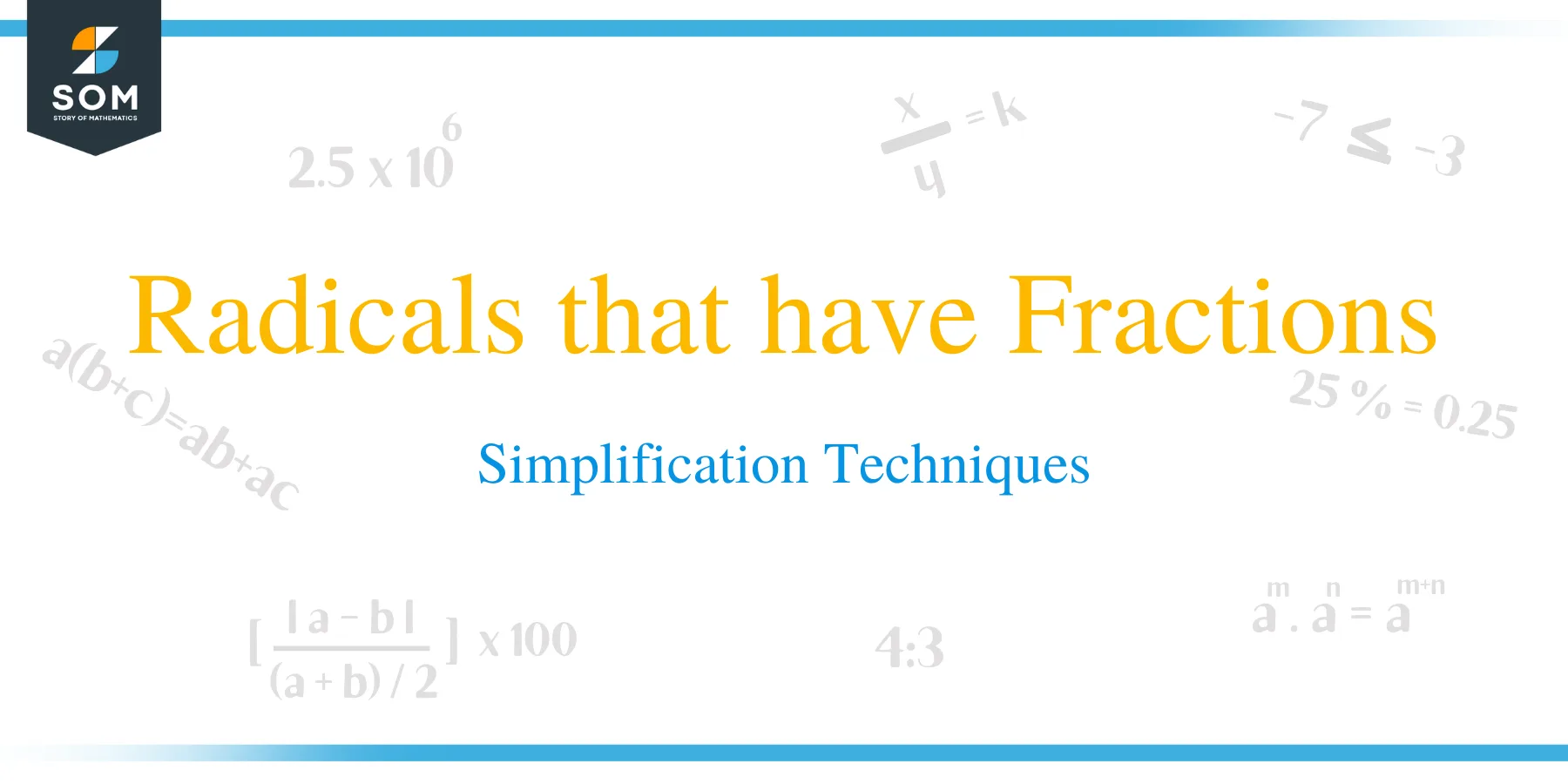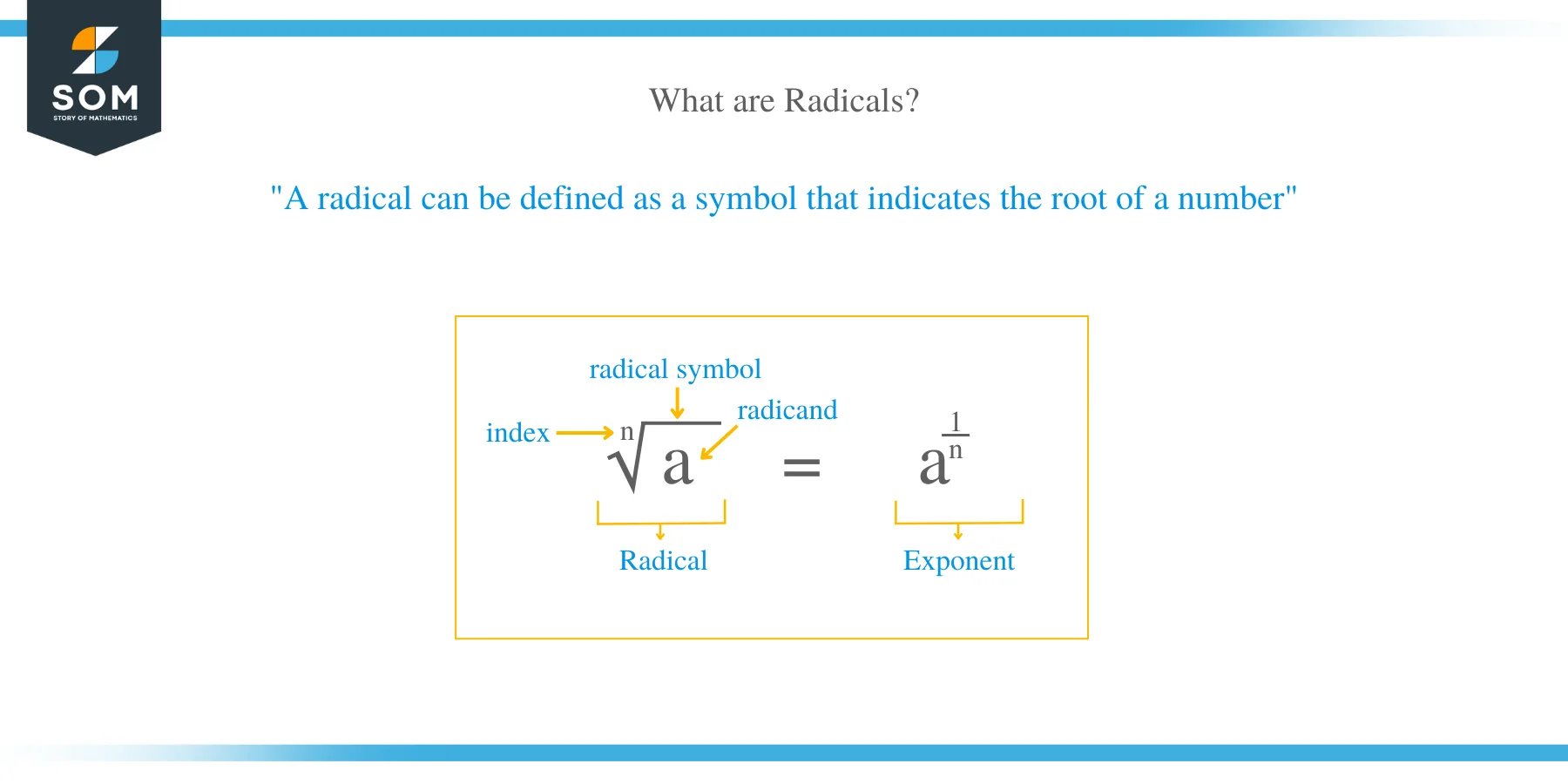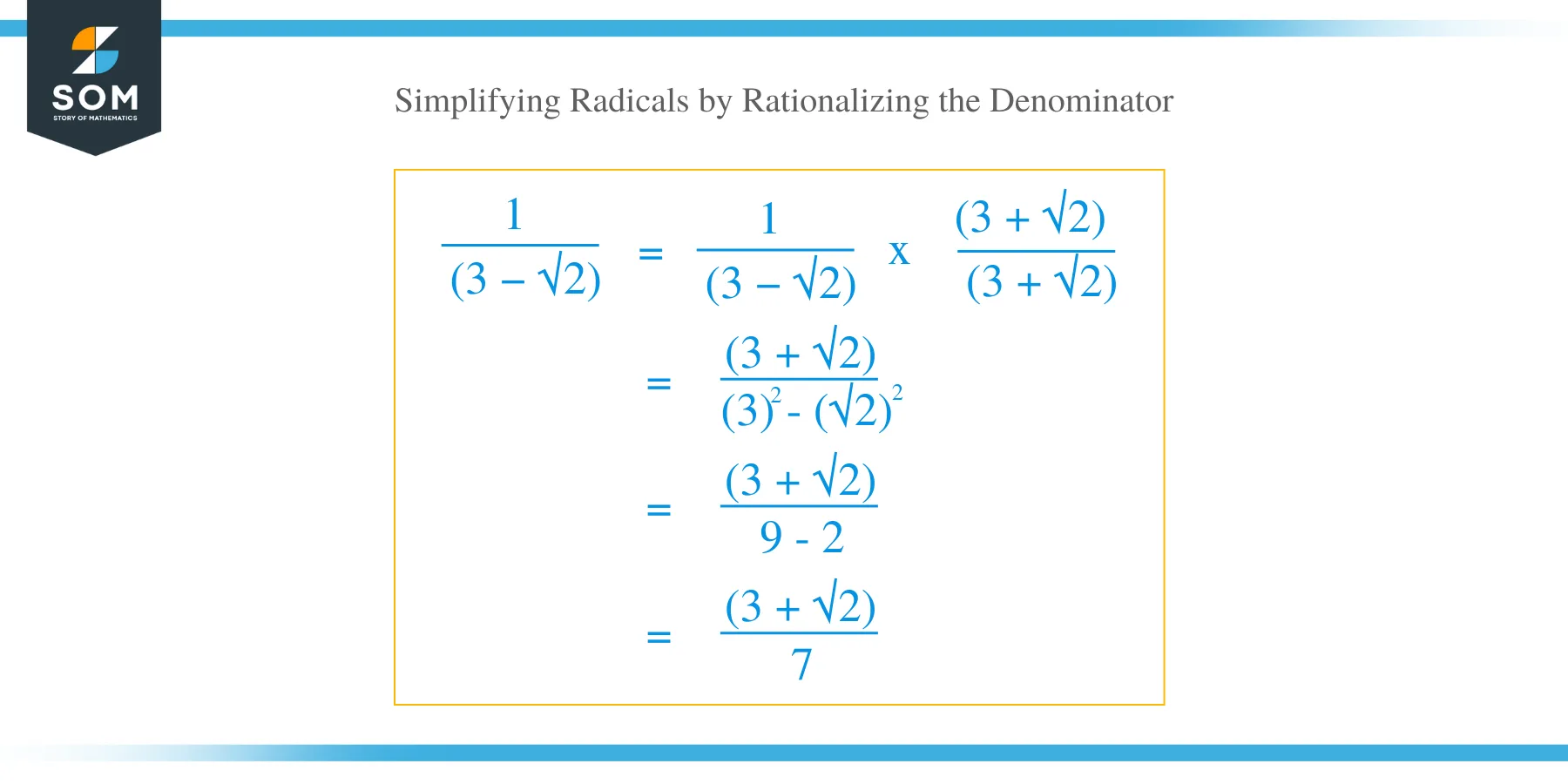- Home
- >
- Radicals that have Fractions – Simplification Techniques
JUMP TO TOPIC
Radicals that have Fractions – Simplification Techniques
 A radical can be defined as a symbol that indicates the root of a number. Square root, cube root, fourth root are all radicals. This article introduces by defining common terms in fractional radicals. If n is a positive integer greater than 1 and a is a real number, then;
A radical can be defined as a symbol that indicates the root of a number. Square root, cube root, fourth root are all radicals. This article introduces by defining common terms in fractional radicals. If n is a positive integer greater than 1 and a is a real number, then;
n√a = a 1/n,
where n is referred to as the index and a is the radicand, then the symbol √ is called the radical. The right and left side of this expression is called exponent and radical form respectively.
How to Simplify Fractions with Radicals?
There are two ways of simplifying radicals with fractions, and they include:- Simplifying a radical by factoring out.
- Rationalizing the fraction or eliminating the radical from the denominator.
Simplifying Radicals by Factoring
Let’s explain this technique with the help of the example below.
Example 1
Simplify the following expression:
√27/2 x √(1/108)
Solution
Two radical fractions can be combined by following these relationships:
√a / √b = √(a / b) and √a x √b =√ab
Therefore,
√27/2 x √(1/108)
= √27/√4 x √(1/108)
= √(27 / 4) x √(1/108)
= √(27 / 4) x √(1/108) = √(27 / 4 x 1/108)
= √(27 / 4 x 108)
Since 108 = 9 x 12 and 27 = 3 x 9
√(3 x 9/ 4 x 9 x 12)
9 is a factor of 9, and so simplify,
√(3 / 4 x 12)
= √(3 / 4 x 3 x 4)
= √(1 / 4 x 4)
=√(1 / 4 x 4) = 1 / 4
Simplifying Radicals by Rationalizing the Denominator
Rationalizing a denominator can be termed an operation where the root of an expression is moved from the bottom of a fraction to the top. The bottom and top of a fraction are called the denominator and numerator, respectively. Numbers such as 2 and 3 are rational, and roots such as √2 and √3 are irrational. In other words, a denominator should always be rational, and this process of changing a denominator from irrational to rational is what is termed as “Rationalizing the Denominator.”
There are two ways of rationalizing a denominator. A radical fraction can be rationalized by multiplying both the top and bottom by a root:
Example 2
Rationalize the following radical fraction: 1 / √2
Solution
Multiply both the numerator and denominator by the root of 2.
= (1 / √2 x √2 / √2)
= √2 / 2
Another method of rationalizing the denominator is the multiplication of both the top and bottom by a conjugate of the denominator. A conjugate is an expression with a changed sign between the terms. For example, a conjugate of an expression such as x 2 + 2 is
x 2 – 2.
Example 3
Rationalize the expression:1 / (3 − √2)
Solution
Multiply both the top and bottom by the (3 + √2) as the conjugate.
1 / (3 − √2) x (3 + √2) / (3 + √2)
= (3 + √2) / (3 2 – (√2) 2)
= (3 + √2) / 7, the denominator is now rational.
Example 4
Rationalize the denominator of the expression; (2 + √3)/(2 – √3)
Solution
- In this case, 2 – √3 is the denominator and rationalizes the denominator, both top and bottom by its conjugate.
The conjugate of 2 – √3 = 2 + √3.
- Comparing the numerator (2 + √3) ² with the identity (a + b) ²= a ²+ 2ab + b ², the result is 2 ² + 2(2)√3 + √3² = (7 + 4√3)
- Comparing the denominator with the identity (a + b) (a – b) = a ² – b ², the results is 2² – √3²
Example 5
Rationalize the denominator of the following expression,
(5 + 4√3)/(4 + 5√3)
Solution
- 4 + 5√3 is our denominator, and so to rationalize the denominator, multiply the fraction by its conjugate; 4+5√3 is 4 – 5√3
- Multiplying the terms of the numerator; (5 + 4√3) (4 – 5√3) gives out 40 + 9√3
- Compare the numerator (2 + √3) ² the identity (a + b) ²= a ²+ 2ab + b ², to get
4 ²- (5√3) ² = -59
Example 6
Rationalize the denominator of (1 + 2√3)/(2 – √3)
Solution
- We have 2 – √3 in the denominator, and to rationalize the denominator, multiply the entire fraction by its conjugate
Conjugate of 2 – √3 is 2 + √3
- We have (1 + 2√3) (2 + √3) in the numerator. Multiply these terms to get, 2 + 6 + 5√3
- Compare the denominator (2 + √3) (2 – √3) with the identity
a ²- b ² = (a + b) (a – b), to get 2 ² – √3 ² = 1
Example 7
Rationalize the denominator,
(3 + √5)/(3 – √5) + (3 – √5)/(3 + √5)
Solution
- Find the LCM to get (3 +√5)² + (3-√5)²/(3+√5)(3-√5)
- Expand (3 + √5) ² as 3 ² + 2(3)(√5) + √5 ² and (3 – √5) ² as 3 ²- 2(3)(√5) + √5 ²
Compare the denominator (3-√5)(3+√5) with identity a ² – b ²= (a + b)(a – b), to get
3 ² – √5 ² = 4
Example 8
Rationalize the denominator of the following expression:
[(√5 – √7)/(√5 + √7)] – [(√5 + √7) / (√5 – √7)]
Solution
- By calculating the L.C.M, we get
(√5 – √7) ² – (√5 + √7) ² / (√5 + √7)(√5 – √7)
- Expansion of (√5 – √7) ²
= √5 ² + 2(√5)(√7) + √7²
- Expansion of (√5 + √7) ²
= √5 ² – 2(√5)(√7) + √7 ²
- Compare the denominator (√5 + √7)(√5 – √7) with the identity
a² – b ² = (a + b)(a – b), to get
√5 ² – √7 ² = -2
